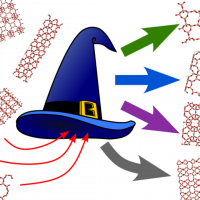
Excerpt from UMass News story: Recently, the journal Digital Discovery published a study from an international research team including UMass Amherst chemistry professor Scott Auerbach that applied artificial intelligence (AI) to a long-standing problem in materials science – identifying structures within massive computer-generated databases that are good candidates for actual fabrication. Auerbach and coworkers focused their study on hypothetical zeolites, which show promise for capturing carbon dioxide emissions.
Zeolites are nanoporous crystals that have been utilized for more than 6 decades in a number of industrial processes, particularly in refining petroleum and separating chemical mixtures. While much effort has been put into identifying and synthesizing new zeolites for modern needs such as producing clean biofuels and capturing carbon dioxide, success has been largely theoretical. While massive databases of hypothetical zeolites have been generated containing millions of new framework structures, none has been made in the lab.
“This problem, which is known as the ‘zeolite conundrum,’ has severely limited the pace of the clean energy transition,” said Auerbach. “Finding the few hypothetical zeolites that can actually be synthesized in the lab is like finding a needle in a gigantic haystack.”
Auerbach and coworkers – Michele Ceriotti and Benjamin Helfrecht at the Swiss Federal Institute of Technology (EPFL) in Lausanne, and Rocio Semino and Giovanni Pireddu at the Sorbonne University in Paris – developed an algorithm called the “sorting hat” that uses artificial intelligence and machine learning to distinguish between the 255 already-synthesized zeolites and more than 300,000 hypothetical framework structures. They created a short list of hypothetical zeolites that are so similar to real ones that they are “misclassified” by the sorting hat as real materials – making them good candidates for actual synthesis.
Read the full story from UMass News.
Stay Connected